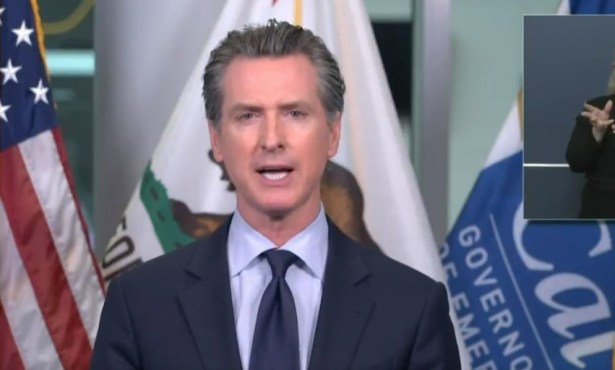Cheeseheads Rule 2020 Presidential Election
Why Wisconsin Is Ground Zero for Donald Trump’s Reelection

For many Democratic voters, the choice in selecting a 2020 presidential candidate comes down to one basic question: Who has the best chance to beat Donald Trump?
As a practical matter, they might ask a far more explicit and meaningful question: Who can beat Trump in Wisconsin?
That’s because the Badger State emerges as the most likely “tipping point” state of the 2020 election, when America’s bitterly polarized political landscape is overlaid by the calculus of the Electoral College.
“In Wisconsin,” the state’s Democratic chair recently told the Washington Post, “we’re already in the general election, while the rest of the country is thinking about the primary.”
HILLARY’S FOLLY: The outsize importance of Cheesehead votes derives from two factors: (1) the rural/urban split that defines its politics reflects the red/blue state of the nation; and (2) its 10 electoral votes are crucial amid the intricate correlations between the Electoral College and the national popular vote.
A state’s electoral votes represent the size of its congressional delegation — the sum of House members, plus two U.S. Senators. Overall, there are 538 electoral votes, so a presidential candidate needs 270 electoral votes to win.
As every schoolchild knows, Hillary Clinton failed to make a single appearance in Wisconsin in 2016. Taking it for granted was a historical, appalling blunder, based on misguided belief in a Democratic “blue wall” of hegemony in much of the industrial Midwest.
When the deal went down, of course, Trump beat Clinton by 22,748 votes out of 2,787,820 cast in Wisconsin (0.8 percent for those keeping score at home); similar micron-thin margins gave him the allegedly safe Democratic states of Michigan (0.2 percent) and Pennsylvania (0.9 percent).
These states delivered Trump a shocking 304-227 Electoral College win — although Clinton won the popular vote by 2.9 million.
Political scientists call such an outcome, which also occurred in George Bush’s 2000 victory over Al Gore, an “inversion.”
Economic researchers at the University of Texas, in a study recently reported by Vox, tested hundreds of thousands of simulated elections to better understand the phenomenon.
They found the following:
- In contests where the popular vote difference is within 2 percent, the losing candidate would win the electoral vote in 30 percent of elections.
- In campaigns with a one percent popular vote differential, such a result would occur 40 percent of the time.
- Overwhelmingly, the Republican would benefit from an inversion election, prevailing in nearly two-thirds of the cases they studied.
“In the modern period, Republicans should be expected to win 65% of Presidential contests in which they narrowly lose the popular vote,” they reported.
WHY WISCONSIN MATTERS: In 2020, it is almost certain that Trump will again lose the popular vote, given his unfavorable ratings and widespread unpopularity in mega-blue states like California and New York.
His chances of claiming the Electoral College look pretty good, however.
The most recent analysis by the University of Virginia’s Center for Politics shows Democrats and Republicans both entering 2020 with a base of 248 Electoral votes — counting states that are safe, likely or significantly leaning to either party.
That leaves 42 electoral votes in three states — Arizona, Pennsylvania, and Wisconsin — that, for now at least, seem genuine toss-ups.
Wisconsin is most likely to be the “tipping point” state next November, as Nate Cohn, statistical propeller head columnist for the New York Times, recently concluded after analyzing reams of state-by-state polling.
This means that Wisconsin would be the most likely to push a candidate over the 270 electoral vote threshold, when states are ranked in order of popular vote margin.
It is possible Trump could lose to a Democrat by more than he did to Clinton and still win reelection, Cohn wrote — if he prevails in Wisconsin.
“Wisconsin is the pivotal state in this analysis, and a one-point difference there could potentially be decisive,” he wrote. “Wisconsin was the tipping-point state in 2016, and it seems to hold that distinction now.”
BOTTOM LINE: New data from the respected Marquette Law School Poll shows Trump tied with every leading Democratic contender in Wisconsin.
Correction: Due to a computational error, and creeping reportorial senility, Donald Trump’s 2016 margins of victory in three states were misstated. Trump defeated Hillary Clinton 0.8 percent in Wisconsin, 0.2 percent in Michigan, and 0.9 percent in Pennsylvania.



